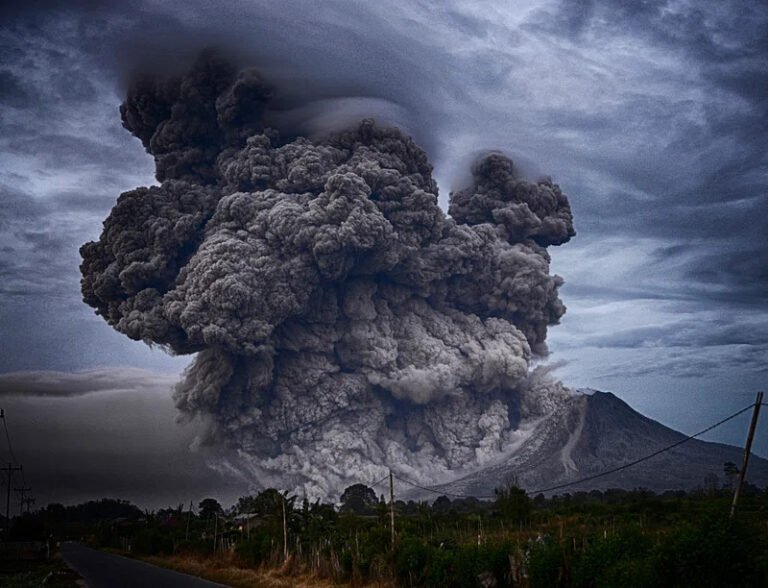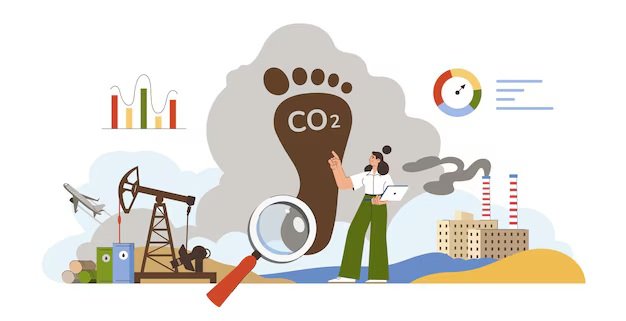Climate Change in 2025: Where We Stand
As we navigate through 2025, climate change has shifted from a distant concern to a daily reality affecting communities worldwide. In January 2025, global temperatures soared to 1.75°C above pre-industrial levels, marking the 18th month in the last nineteen months where temperatures exceeded the critical 1.5°C threshold set by the Paris Agreement. This alarming trend shows the urgency of addressing climate change head-on.
The impacts are no longer abstract. In Los Angeles, devastating wildfires in January 2025 forced the evacuation of 180,000 residents and resulted in at least 10 fatalities. These events highlight the tangible consequences of a warming planet.
Despite the emergence of La Niña, which typically brings cooler global temperatures, the planet continues to experience unprecedented warmth. This paradox shows the dominant influence of human-induced greenhouse gas emissions on our climate.
In this guide, we’ll look into the current state of climate change, examine the latest scientific findings, share real-world experiences, and offer practical, actionable steps. This is more than information; it’s a call to action for us to engage in meaningful solutions.
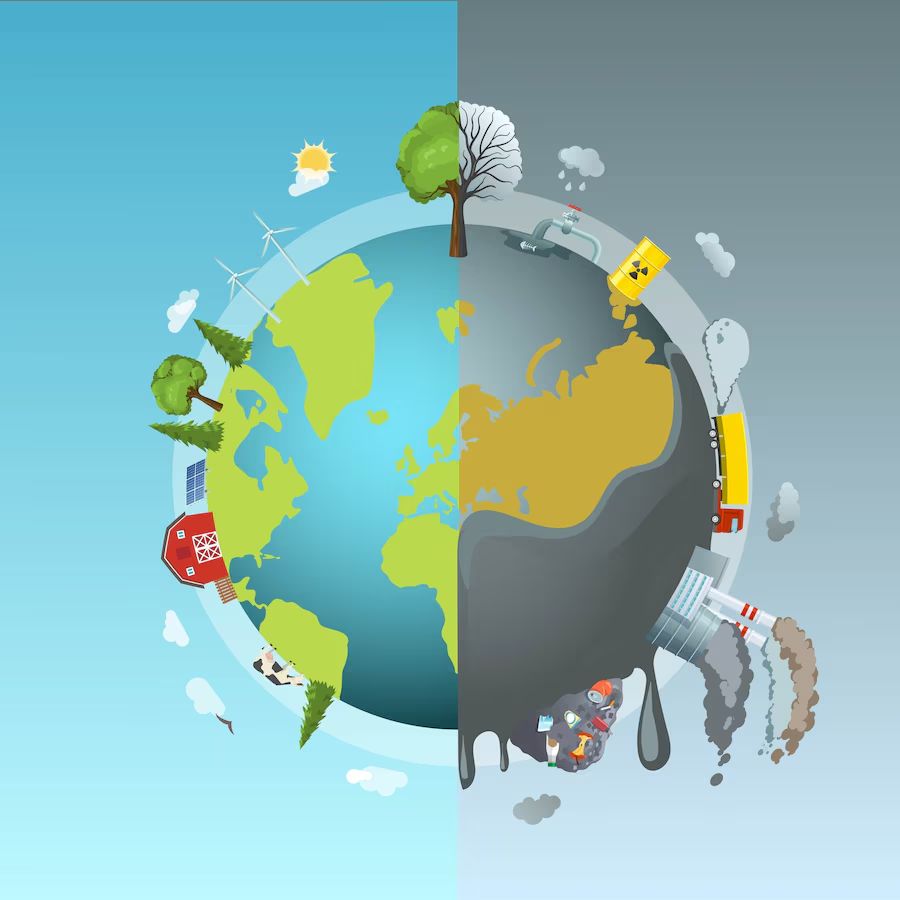
In This Article
- The State of the Planet: 2025 Climate Snapshot
- Melting Realities: True Stories from the Frontlines
- Key Drivers of Climate Change in 2025
- Environmental Tipping Points: Are We Too Late?
- Climate Change Performance Index 2025 and Heroes of the Year: Who’s Leading the Way?
- Technology and Innovation: Bright Spots
- Health, Inequity, and Climate Justice
- What Can Individuals Do in 2025?
- What’s Ahead: Projections and Possibilities
- Conclusion: Choosing the Future
The State of the Planet: 2025 Climate Snapshot
Rising Global Temperatures
Over the past century, our planet’s temperature has steadily increased. Recent data indicates that the global average temperature is approximately 1.2°C higher than pre-industrial levels. This warming has intensified heat waves, droughts, and severe weather events worldwide.
Sea-Level Rise Threatens Coastal Cities
Coastal regions are experiencing the dual challenge of rising sea levels and sinking land. A 2025 NASA study revealed that cities like San Francisco and Los Angeles are subsiding, exacerbating the effects of sea-level rise. Projections suggest that California could see sea levels rise between 6 and 14.5 inches by 2050, posing significant risks to coastal communities.
Surge in Climate-Induced Displacement
Disasters related to climate change have displaced millions. By the end of 2023, approximately 7.7 million people were internally displaced due to such disasters. As extreme weather events become more frequent and intense, this number is expected to rise, which shows the urgent need for comprehensive climate action.
Energy Demand and the Shift to Renewables
The global demand for electricity is on the rise, driven by factors like increased use of air conditioning during heat waves and the expansion of data centres. The International Energy Agency (IEA) forecasts a 4% annual growth in electricity demand through 2027. Encouragingly, renewables are projected to meet about 95% of this growth, with their share in global electricity generation expected to reach 35% by 2025.
A Mixed Outlook
While the expansion of renewable energy offers hope, challenges remain. The IEA anticipates that global CO₂ emissions from electricity generation will plateau over the next few years, highlighting the need for accelerated efforts in emission reductions.
Melting Realities: True Stories from the Frontlines
Story 1: Displaced by Rising Seas in Bangladesh
In the low-lying coastal regions of Bangladesh, rising sea levels have become an unrelenting adversary. Nur Jahan, once a resident of Kutubdia Island, experienced this firsthand. In 1991, a devastating cyclone engulfed her home, claiming the lives of all six of her children. With her land submerged and livelihood destroyed, she sought refuge in Cox’s Bazar on the mainland. Over the years, thousands like Nur have been forced to abandon their ancestral homes as the sea continues its encroachment. The UNHCR reports that entire communities from Kutubdia have relocated to urban areas, only to face overcrowded conditions and limited resources.
Approximately two-thirds of Bangladesh lies less than five meters above sea level, making it exceptionally vulnerable. Projections suggest that by 2050, a 50 cm rise in sea level could submerge around 11% of the nation’s land, potentially displacing 15 million people. The salinisation of freshwater sources further exacerbates the crisis, rendering vast tracts of agricultural land barren and jeopardising the livelihoods of millions.
Story 2: Farming Amidst Drought in California
In California’s San Joaquin Valley, farmers grapple with the dual challenges of drought and water scarcity. Don Cameron, a seasoned farmer at Terranova Ranch, has witnessed the transformation of the region’s climate patterns. To combat the erratic swings between drought and deluge, Cameron pioneered a method to use floodwaters to recharge depleted aquifers. By diverting excess floodwater onto his fields, he not only replenishes groundwater reserves but also mitigates flood risks downstream. This innovative approach has raised the local water table by 40 feet since the 2017 floods.
However, the path hasn’t been devoid of obstacles. California’s water rights present legal and political challenges. Disputes over the ownership and usage of floodwaters complicate the implementation of such recharge projects. Despite these hurdles, Cameron’s efforts show the potential of adaptive strategies in ensuring the sustainability of agriculture in the face of climate change.
Learn More: What was the Environmental Impact of the Industrial Revolution?
Key Drivers of Climate Change in 2025
1. Fossil Fuels Still Dominate
Despite advancements in renewable energy, coal, oil, and natural gas continue to supply a substantial portion of the world’s energy needs. This reliance is deeply rooted in the economic structures of major nations. For instance, the United States, Saudi Arabia, and Russia have historically provided significant financial support to the fossil fuel industry. In 2022, global fossil fuel subsidies reached a staggering $7 trillion, accounting for 7.1% of the world’s GDP. These subsidies not only strain public finances but also hinder the transition to cleaner energy sources.
2. Deforestation & Agriculture
The Amazon rainforest, often referred to as the Earth’s lungs, has experienced increased deforestation due to illegal mining and expansive soy production. This destruction not only releases vast amounts of carbon dioxide but also diminishes the planet’s capacity to absorb existing CO₂. Additionally, livestock farming is a significant contributor to greenhouse gas emissions. However, the exact figures are under scrutiny. In 2024, over 20 scientific experts criticised the UN’s Food and Agriculture Organisation for inaccuracies in their report on livestock emissions, suggesting that the impact of dietary changes on reducing agricultural greenhouse gases might be understated. This highlights the complexities involved in addressing emissions from agriculture.
3. Industrial Emissions & Consumerism
Our modern lifestyles, characterised by fast fashion, the latest tech gadgets, and significant food waste, have environmental consequences. By 2024, global plastic production had surged to 400 million metric tons, a dramatic increase from 2 million metric tons in 1950. Alarmingly, only 10% of this plastic is recycled, leaving the majority to pollute our ecosystems. This accumulation not only harms marine life but also contributes to the broader climate crisis.
Environmental Tipping Points: Are We Too Late?
Wildfires and Heatwaves
The summer of 2024 was the hottest on record globally, with temperatures 0.69°c above the 1991-2020 average, surpassing the previous record set in 2023. Europe endured deadly heatwaves and extreme weather from as early as June, impacting millions and causing significant economic losses. In Canada, the 2023–2024 fire season was marked by unprecedented fire extent and emissions, with deadly, fast-moving fires affecting various regions. Australia also faced severe wildfires, with at least four fires burning in the state of Victoria as weather conditions worsened. These events contributed to a tragic human toll, with thousands of heat-related deaths reported globally in 2024.
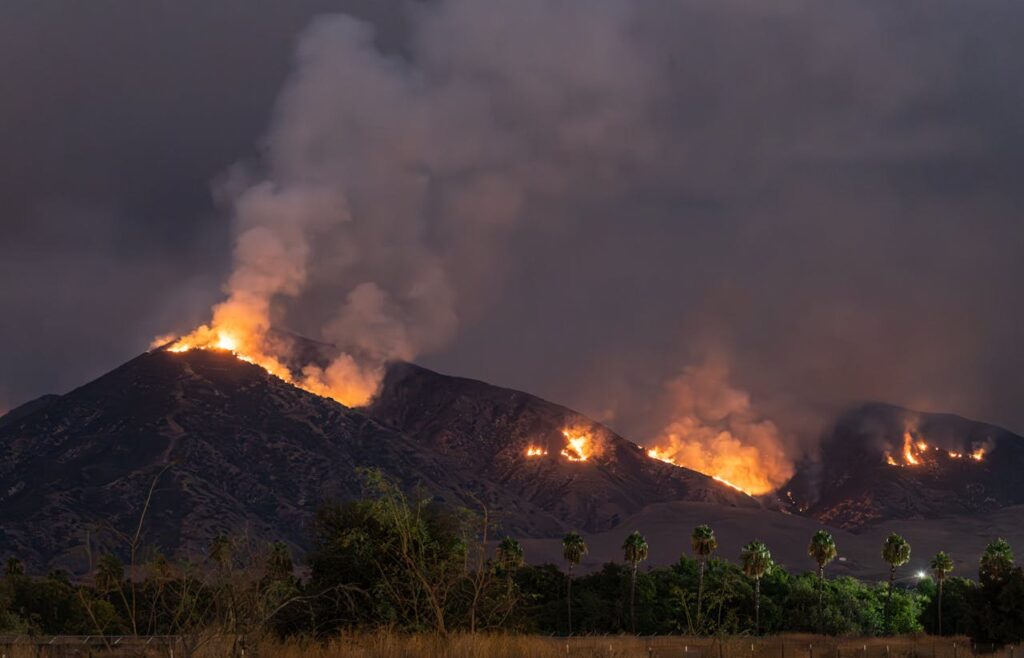
Glacier Retreat & Arctic Warming
Greenland’s ice sheet is experiencing significant and accelerating ice loss, with current estimates indicating an average reduction of approximately 270 billion metric tons per year between 2002 and 2023. This substantial ice loss contributes to rising sea levels and has the potential to disrupt global ocean currents.
Recent studies suggest that the Arctic Ocean could experience its first ice-free summer day as early as 2027, earlier than previously anticipated due to rapid melting. This transformation is expected to have profound effects on global climate patterns, including alterations to the jet stream and precipitation systems.
Dr. Johan Rockström, Director of the Potsdam Institute for Climate Impact Research, has emphasized the urgency of the situation, stating, “We must admit that we have underestimated the risks of unleashing irreversible changes, where the planet self-amplifies global warming.”
These changes are not distant threats—they are already altering weather patterns, sea levels, and global food systems in real time.

Climate Change Performance Index 2025 and Heroes of the Year: Who’s Leading the Way?
The Climate Change Performance Index (CCPI) 2025, developed by Germanwatch, the NewClimate Institute, and the Climate Action Network (CAN), offers a transparent, comparative look at climate protection efforts across 63 countries and the EU, together responsible for over 90% of global greenhouse gas (GHG) emissions.
This year’s CCPI 2025 rankings reflect both progress and urgent gaps. No country achieved the top three rankings—again signalling that no nation is fully on track to limit warming to 1.5°C. However, a few countries are emerging as bold leaders in the race toward sustainability.
Top Performers: Bright Spots in a Challenging Year
1. Denmark – #4 Overall
Denmark once again leads the CCPI, thanks to its aggressive transition to renewable energy, strong climate policies, and leadership in wind energy technology. The Danish government’s ambitious target of reducing GHG emissions by 70% by 2030 sets a benchmark for the rest of the world.
2. Estonia – Rising Star
Estonia moved up in the index due to significant improvements in energy efficiency and GHG reduction policies. The country is moving away from oil shale and increasing its solar and wind capacity at a rapid pace.
3. Norway – 🇳🇴 Net-Zero Model
Ranked among the top for renewable energy and transportation, Norway is setting the global standard for electric vehicle (EV) adoption. By early 2025, 96% of new cars sold in Norway were fully electric, showing the nation’s commitment to phasing out fossil fuel transport entirely by the end of this year. Hydropower continues to dominate Norway’s energy grid, ensuring that the electric transition is clean and sustainable.
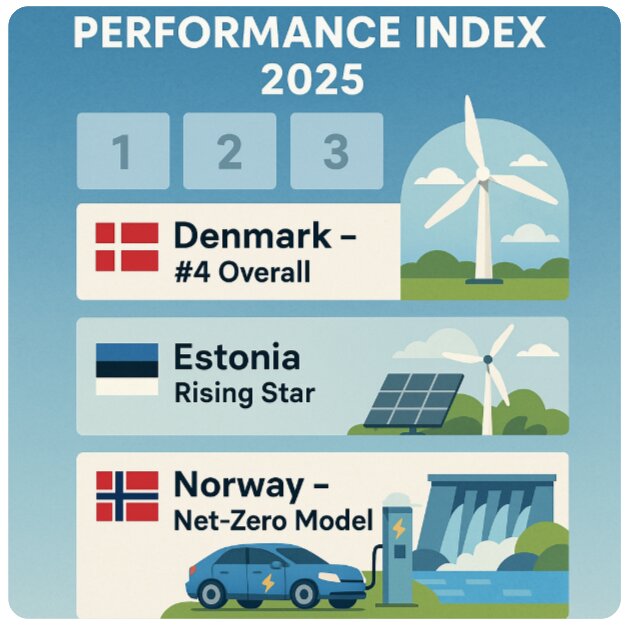
🇪🇺 Policy Wins in Europe: The Green Deal in Motion
Europe’s Climate Change Performance Index scores were bolstered by broad regional collaboration and sweeping policy changes under the European Green Deal. The EU is on track to reduce GHG emissions by at least 55% by 2030, compared to 1990 levels—an ambitious mid-point on the path to climate neutrality by 2050.
- France is phasing out coal by 2027 and aims to reduce fossil fuel reliance from 60% to 40%. The country is ramping up electric vehicle production and introducing low-emission zones across cities.
- Germany has already slashed emissions by 35% compared to 1990 levels, thanks to structural reforms in the energy sector and investments in green tech.
- Spain and Portugal continue to shine in the renewables category, with massive growth in solar and wind capacity.
These advances are not just policy wins—they’re proof that coordinated, cross-border efforts can drive real results in the fight against climate change.
Who’s Taking Action: Heroes of 2025
While governments and industries play a vital role, people power remains the heart of climate action. 2025 has highlighted a new generation of climate champions—many from the Global South—who are demanding justice, inclusion, and urgent action.
Mitzi Jonelle Tan – Voice of the Philippines
Mitzi is the international spokesperson for Youth Advocates for Climate Action Philippines (YACAP). As a leader from one of the world’s most climate-vulnerable nations, she amplifies voices from the Global South and challenges the dominance of Global North narratives in international negotiations.
“We’re not asking for charity. We’re demanding accountability.”
Leah Namugerwa – Uganda’s Climate Firebrand
Leah is a powerful advocate for climate justice in East Africa. At just 20 years old, she’s leading national tree-planting campaigns, speaking at UN forums, and calling out greenwashing by world leaders.
“We don’t want empty promises. We want justice. We want solutions that don’t just benefit the rich.”
Technology and Innovation: Bright Spots
Clean Energy Surges
The past decade has witnessed a dramatic decline in solar energy costs. Between 2009 and 2019, the cost of electricity from new solar power plants plummeted by 89%, making it more affordable than ever. This reduction has sparked a solar boom across Africa, where approximately 8% of households in Sub-Saharan Africa with electricity access now rely on off-grid solar systems. This shift is illuminating homes and empowering communities that were previously without reliable electricity.
Carbon Removal & Soil Regeneration
Innovative companies like Climeworks are making significant strides in carbon capture technology. In May 2024, Climeworks inaugurated Mammoth, its second large-scale Direct Air Capture and Storage facility, capable of capturing up to 36,000 tons of CO₂ annually. On the agricultural front, farmers are embracing regenerative practices such as no-till farming, cover cropping, and the application of biochar. These methods enhance soil health, increase biodiversity, and sequester carbon, contributing to a more sustainable and resilient food system.
Smart Cities
Urban centres are transforming into models of sustainability. Singapore has introduced green roofs on public buses to reduce emissions and improve air quality. Oslo has optimised its electric bus fleet, reducing greenhouse gas emissions by 28% since 2009. San Diego’s Climate Action Plan focuses on improving urban transport, protecting nature, and enhancing the quality of life for its residents. These initiatives demonstrate a commitment to creating healthier, more sustainable urban environments.

Learn More: 20 Biggest Environmental Problems and How to Manage Them
Health, Inequity, and Climate Justice
Public Health Crisis
Air pollution is a silent killer affecting millions worldwide. The World Health Organisation reports that the combined effects of ambient and household air pollution are responsible for approximately 7 million premature deaths annually. This staggering number shows the pervasive impact of polluted air on global health. Moreover, climate change is facilitating the spread of diseases like dengue and malaria into regions previously unaffected, exacerbating public health challenges.
The Inequality Gap
The injustice of climate change is stark: Africa contributes just about 2 to 3 percent of global carbon dioxide emissions from energy and industrial sources, yet it bears the brunt of climate-related hardships. Droughts and erratic weather patterns have led to severe food shortages, with over 57 million people facing hunger across the Horn, East, Central, and West Africa. This disparity highlights a cruel paradox—those least responsible for climate change suffer its most devastating consequences.
As Ugandan climate activist Vanessa Nakate poignantly states, “These are some of the injustices of the climate crisis—those who didn’t cause the climate crisis, those who aren’t responsible for the rising global emissions, are the ones who are suffering the most.”
Addressing these challenges requires a concerted effort to reduce emissions globally and support vulnerable communities disproportionately affected by climate change. Climate justice is not just an ethical imperative; it’s essential for the survival and well-being of millions.
What Can Individuals Do in 2025?
Everyday Actions That Still Matter
- Switch to Renewable Energy Providers: Transitioning your home to green energy can significantly reduce your carbon footprint. For instance, choosing renewable energy can help you reduce your CO₂ emissions by about 22,771 pounds per year.
- Adopt a Plant-Rich Diet: Reducing meat consumption and focusing on plant-based foods can lower your greenhouse gas emissions. Embracing a plant-rich diet can be adopted incrementally with small behavioural changes that together lead to globally significant reductions in greenhouse gas emissions.
- Opt for Active Transportation: Opting to walk or cycle rather than drive significantly reduces carbon emissions. For example, cycling produces only about 33 grams of CO₂ per mile—a fraction of the emissions generated by a conventional gasoline-powered vehicle.
- Limit Air Travel: Air travel is a major source of carbon emissions. For instance, a single round-trip flight between Chicago and London can generate approximately 2.2 metric tons of carbon dioxide per passenger. Cutting back on non-essential air travel is one of the most effective ways to lower your personal carbon footprint.
- Support Sustainable Policies: Use your vote to back leaders and initiatives that prioritise environmental sustainability, driving systemic change.
Tech Tools for Sustainability
- JouleBug: This app turns sustainable living into a game, encouraging eco-friendly habits through challenges and rewards.
- Too Good To Go: Connect with local eateries to rescue surplus food at reduced prices, combating food waste and saving money.
- Oroeco: Track your personal carbon footprint and discover tailored tips to reduce your environmental impact.
What’s Ahead: Projections and Possibilities
- Business-as-Usual (BAU): If we continue on our current trajectory without significant changes, projections indicate a global temperature rise of approximately 3.1°c by the end of this century. This level of warming could lead to severe consequences, including more frequent and intense heat waves, storms, and droughts. Food and water security would be jeopardised, and many regions could become uninhabitable.
- Aggressive Mitigation: By implementing strong policies to reduce greenhouse gas emissions, we have the potential to limit global warming to around 1.5°c. Achieving this requires a 42% reduction in emissions by 2030 and a 57% reduction by 2035. While this path demands substantial effort, it would significantly reduce the risks associated with climate change.
- Net-Zero Breakthrough: Embracing innovative technologies and transitioning to carbon-neutral economies by 2050 could set us on a sustainable trajectory. This approach involves substantial investments in clean energy, electrification of transportation, and enhanced energy efficiency. The International Energy Agency emphasises that immediate action and measurable short-term targets are crucial to avoid the worst effects of climate change.
Our collective actions today will determine which of these futures becomes our reality. The choices we make now are pivotal in shaping a sustainable and habitable world for future generations.
Conclusion: Choosing the Future
The climate crisis in 2025 is both terrifying and galvanising. It’s a wake-up call—loud and clear—that this is not a rehearsal. The science is clear, the stories are real, and the time is now.
But amidst the chaos, there’s also profound hope.
In the words of climate scientist Dr. Katharine Hayhoe:
“The most important thing you can do to fight climate change? Talk about it. Make it real. And then, act.”
Actionable Checklist: What You Can Do Today
- Don’t give up — every action matters
- Educate yourself and others — share stories, not just data
- Switch to green power and divest from fossil fuels
- Support climate-conscious brands and boycott greenwashing
- Join or fund local and global climate movements
- Eat sustainably and waste less
- Pressure governments and companies to act boldly

